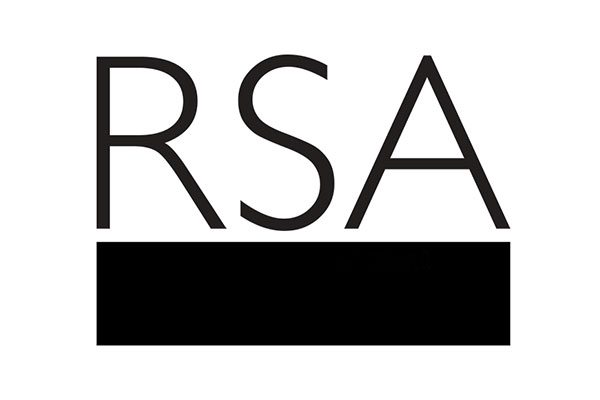A few weeks ago I blogged about the social impact of mass ownership of drones. Another area of technology that will be in homes and workplaces across the country in the not too distant future is 3D printers. While the price used to be prohibitive, it is now dropping fast as their popularity rises. I have a friend who bought a 3D printer for under a £1,000, though it can only print in white plastic, which is rather limiting once you get over the novelty.
3D printing is already in use widely for businesses and the RSA has been helping to set up hubs for designers, some of which will contain 3D printers. Even ASDA has got in on the trend.
Home 3D printing will work in the following way: you need a collar for your dog, so you go online to one of the websites which has ready designed objects and choose a dog collar you like. You personalise it, perhaps choosing the colour, putting your dog’s name on it and making it a bit larger because you’ve been overfeeding him. Then you purchase the tailored design and it is downloaded to your printer on your kitchen table (via your computer) which immediately prints it out, ready to use.
Not all objects will be printable, there will be size limitations and complex objects like smart phones will be beyond home printers. However, given that it is possible to already print in a huge variety of materials from glucose (i.e. sugar) to ceramic, including combining different materials in one object, the majority of everyday items will be printable.
What does mass 3D printer ownership mean for society?
While cheap 3D printers will bring huge changes in many areas, not least manufacturing, I’m focusing here on the relatively under discussed topic of the societal impact of mass 3D printer ownership.
3D printing hit the headlines last year with the printing of a working gun and will continue to make it increasingly difficult to stop the distribution of illegal objects. It’s far easier to find and confiscate a physical object than a computer file. When that file is finally turned into a physical object it only needs to happen immediately before it is used. The game of cat-and-mouse between law enforcement and criminals will move further online.
It’s far easier to find and confiscate a physical object than a computer file.
Personal interaction will reduce, with fewer of those incidental chats and conversations that are so important in building strong communities. I live in a town so when I go to my local high street I often bump into people I know. Using 3D printing I won’t be bumping into anyone.
Another implication is that it will take ‘mass personalisation’ to new levels. This is where companies are able to personalise things for people without the huge cost of human intervention to do so, like the dog collar example above. Indeed this will probably be the norm, turning us all into creatives, all able to personalise jewellery, watches, clothes, food, cutlery and so on before we buy.
This will put out of business organisations that don’t adapt to the world of mass personalisation, while also continuing the trend of the UK becoming a nation of small businesses as it reduces design and prototype costs, increases the ease of servicing customers and allows manufacturing to take place in a home office.
Personal interaction will reduce, with fewer of those incidental chats and conversations that are so important in building strong communities
Finally it will have a large positive effect on the environment. Place of manufacture has become disassociated from place of consumption. Planes, ships and trucks transport millions of goods around the world every day at huge environment cost. If the two are brought together this would significantly reduce the environmental damage of goods transportation.
3D printing brings many benefits, along with some headline grabbing challenges. What will probably fly under the radar, but is of significant concern and shared with mass drone ownership, is the gradual erosion of social interaction, accidental meetings and community cohesion. One technological advance doesn’t cause a noticeable difference but a variety of them that are happening at the moment are adding up to significantly more atomised communities. While Local Authorities already take steps to build community cohesion, they are fighting against the tide, and more needs to be done.
Universal 3D printer ownership won’t happen yet. Few would put up with the white plastic spoons, cups, plates and other objects that are slowly taking over my friend’s house as he prints out what he needs, but it won’t be far off.
Oliver Reichardt is Director of Fellowship at the RSA, you can follow him @OliverReichardt
Related articles
-
Compassionate Design and Small-Scale Manufacturing
Cathy Treadaway Karen Davies
Ethical, sustainable manufacturing; two FRSAs from Wales highlight how they have made a success of their pilot and how they hope to scale it up.
-
Designing Futures That Work
Paul Nash Jules Todd
Jules Todd and Paul Nash invite you to help grow a new, action-focused and collaborative network around systems thinking.
-
The Designed Life
Graham Henderson
From the basement of the V&A to a major international visitor attraction. Graham Henderson FRSA examines how the Design Museum has transformed itself.



Join the discussion
Comments
Please login to post a comment or reply
Don't have an account? Click here to register.
By the way, many current metal direct energy based 3D printing technologies (powder bed fusion and directed energy deposition) are very energy intensive. This, however, is an entirely relative issue if the energy used is produced from renewable sources placed near the production plant. In addition, upcoming technologies such as production level metal binder jetting may significantly reduce energy
Of course, 3D printing has good and bad impacts to our society. However, we can do something about the bad impact to at least control it like the illegal printing of guns. The government can put some regulation to prevent this. For the benefits, I guess we should keep spreading what 3D printers can do for our society like how it is helping the medical industry. This 3D printed skull is just one of the many examples: http://www.3d2print.net/shop/b....
Sorry Oli. DMU is De Montfort University, AM is additive manufacture and RP is rapid prototyping. I agree, we are beginning to see a more rapid increase which brings on the opportunity for more people to test, trial and hack solutions to problems they encounter.
Coming with drawing office experience dating back to
the mid 1960's and graduating to CAD modelling in the late 1980's when CAD virtual
models could be downloaded to a “Computer Aided Manufacturing Process” CAM
seemed a designers dream. Then in the late 1990’s saw examples of the
burgeoning 3D printing systems. All very seductive and I’ll admit when I
noticed that Maplin’s were about to retail a 3D printing system for around £700
my pulse raced until that is I started to see the quality of the print of the
cheap end 3D print market. There are 5 main systems for 3D printing and the 2
most expensive “Stereolithography Addition (SLA)” and “Selective Laser
Sintering (SLS)” are the systems that produce by reasonably sized complex models
with acceptable finishes. SLA systems can also use different materials commensurate
with requirements. However as I have
found, a cardboard model or a virtual reality animation can be a far better way
of demonstrating to self as well as client that the design can be manufactured
and does work. Have on more than one occasion have heard that a wonderful
design in virtual reality is impossible to manufacture in actual reality.
Simple example of cad animation via. -
https://www.facebook.com/photo...
After reading this post I started to think about 3D printing as a way of either encouraging or discouraging sharing.
It prompted me to take another look at Zygmunt Bauman’s Liquid Modernity(http://muse.jhu.edu/journals/m... and to touch base again with some of his key ideas.
Also thought about Phlip K Dick’s story Autofac –
here the machine makes copies of all things – and keeps copying and copying,again and again. In the end the car
which the protagonist steps into actually melts away and the world of things degrades …completely.